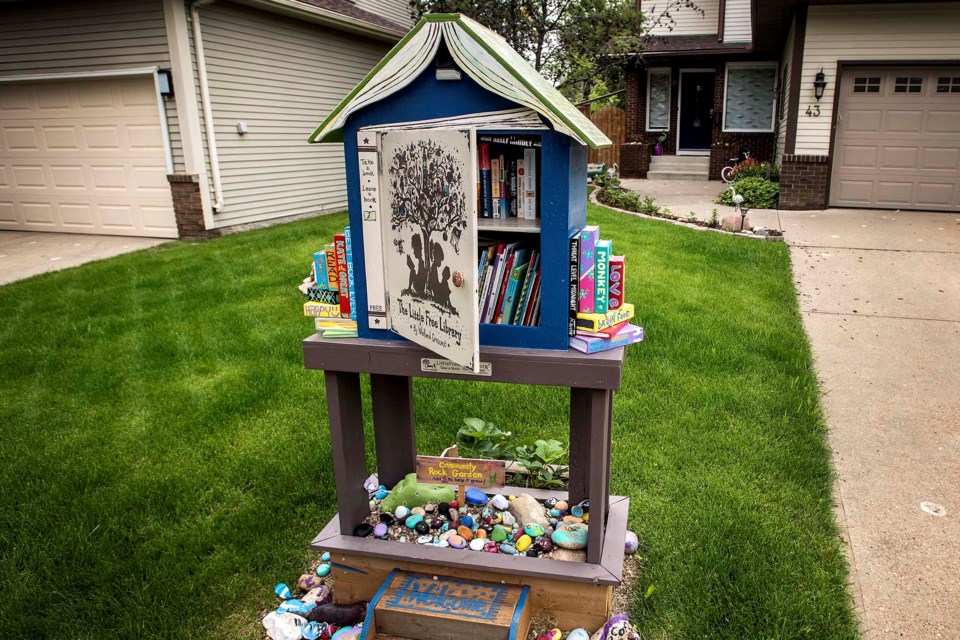If you’ve ever cruised St. Albert’s streets, perhaps in pursuit of some light reading, you’ve probably seen bright boxes full of books, some decorated, some with the word “Library” emblazoned across the structure. They’re whimsical, they’re eye-catching and, five years on, it looks like they’re here to stay.
St. Albert’s Little Free Library program has grown since 2014, expanding to 35 spots around the city. The small-but-colourful structures are generally crammed full of books to delight and entice even the most apathetic reader.
Sheri Rempel, the caretaker of one such St. Albert library, told the Gazette this week her Little Free Library on Welland Crescent is frequented by residents and helps to connect neighbours to one another. It acts as a community hub of sorts, a conversation piece and a place to have those conversations.
At a time in our society when the solitary engagement of Facebook, Instagram, Snapchat and other isolating social media platforms is an all-consuming passion for many – and, ironically, has been linked to lower levels of literacy in children – the accessibility of libraries virtually in your backyard is more important than ever. They provide a source of honest, tangible connection that hails back to the small-town archetypes that are all too easily lost in our world of modern technology.
These tiny bastions of literacy had humble beginnings. Those of us who are old enough might think back to small boxes of books that used to sit in general stores or parish churches, before modern-day library systems took hold. But the genesis of the Little Free Library program itself was only a decade ago. It was a sweet, unassuming gesture of love that launched the program in 2009 when Todd Bol created a wooden model of a one-room schoolhouse, filled it with books and put it on a post in his front yard in Hudson, Wis., in tribute to his mom who had been a teacher and loved to read. Bol hoped to encourage a book exchange for his neighbours – who instantly loved the little structure and the books inside it – and wound up launching a global literacy movement.
Now, the program has evolved into a non-profit organization with 80,000 registered libraries in more than 90 countries. In the 10 years this program has existed, readers of all ages and backgrounds have exchanged millions of books.
The data from studies backs up the importance of these libraries. A 2010 study from the University of Tennessee at Knoxville showed one of the most successful ways to improve the reading achievement of children is to increase their access to books, especially at home.
If the magic of Little Free Libraries can tempt young people to pick up a book and put down their iPad or introduce neighbours to each other as they browse the curated collection on their street, then let there be a Little Free Library on every corner.


